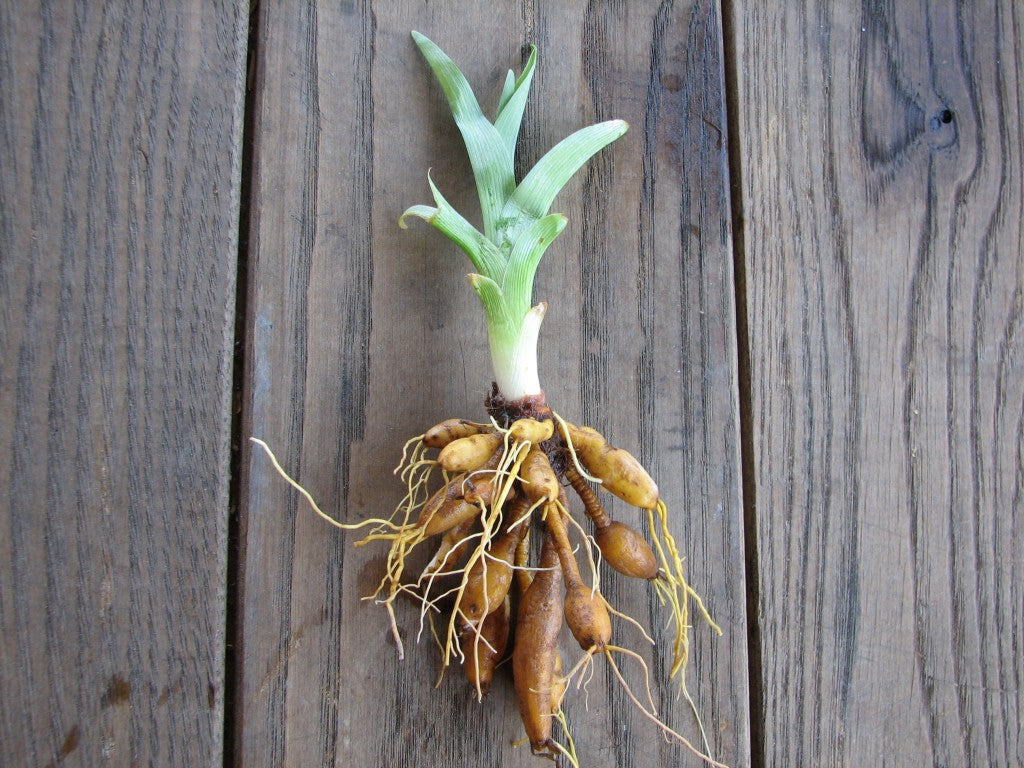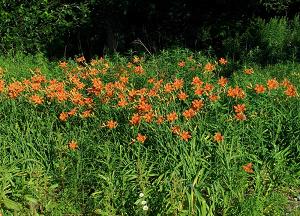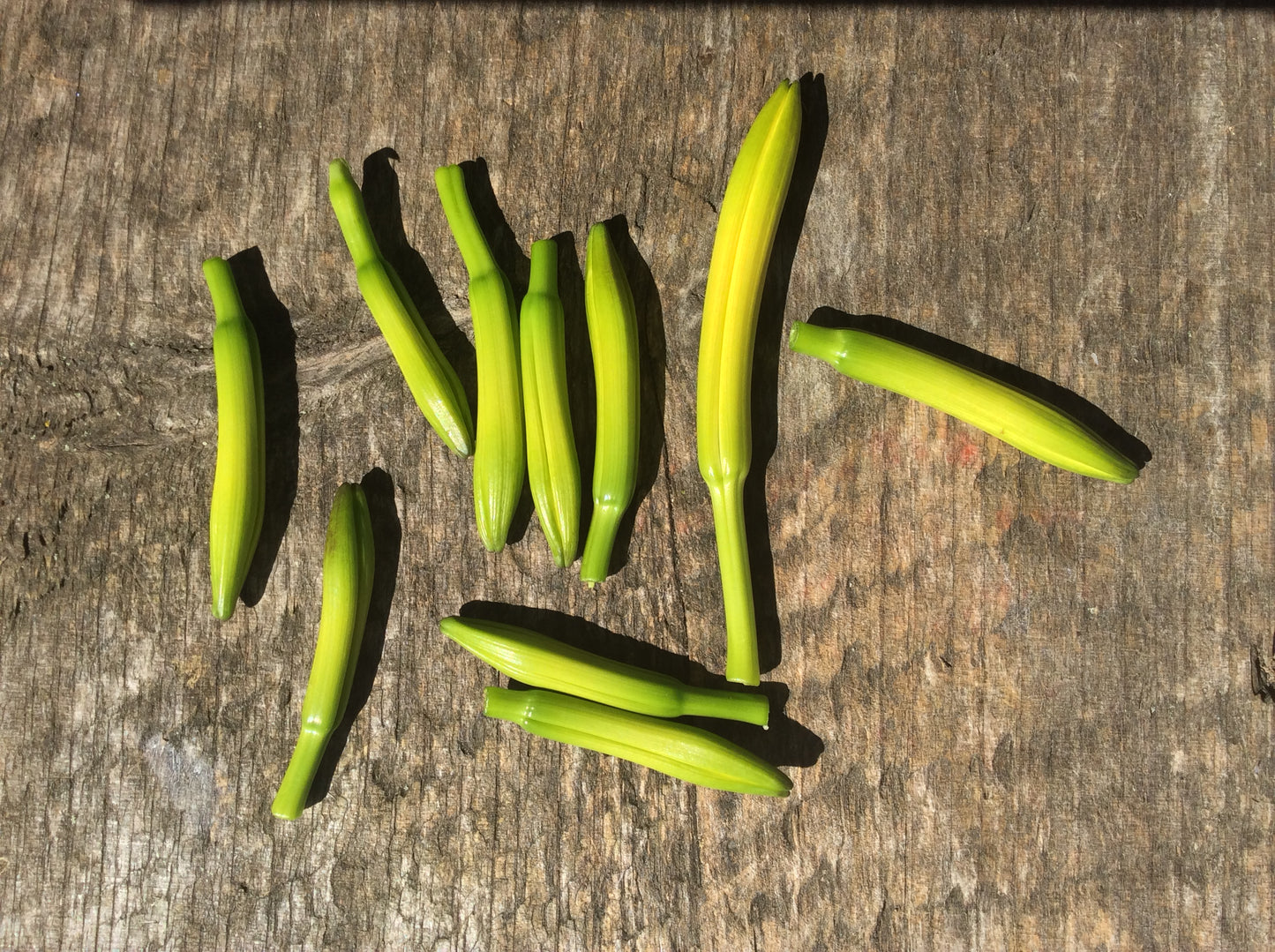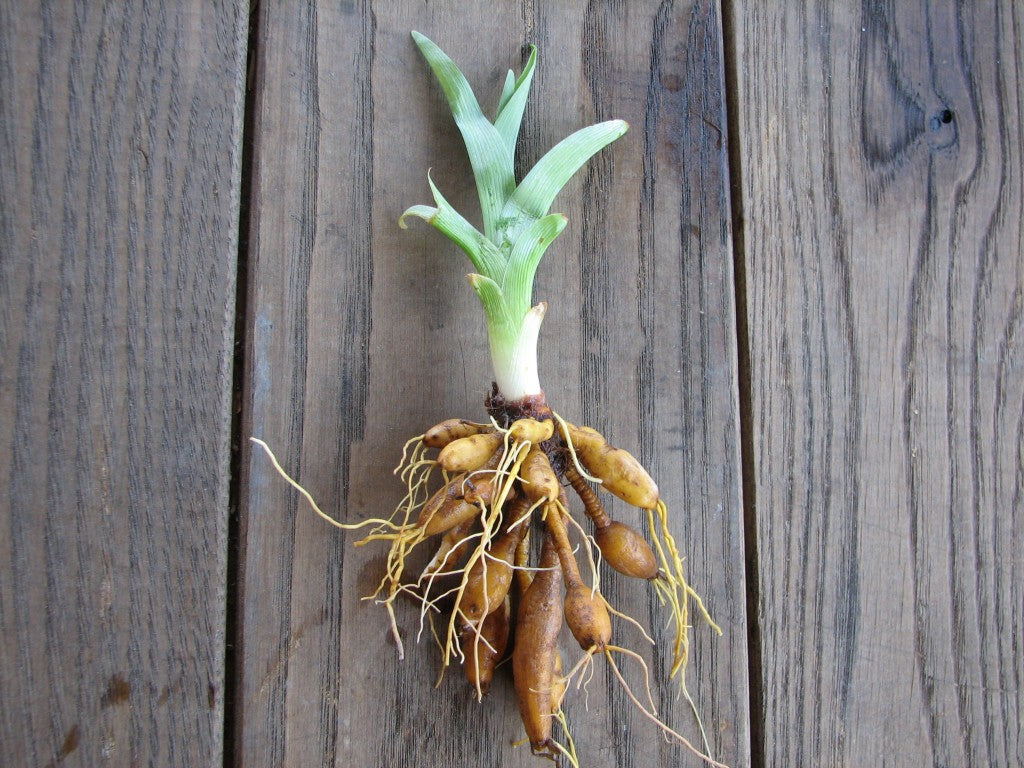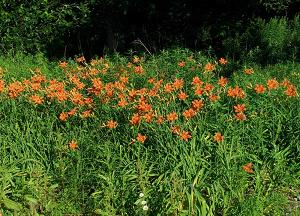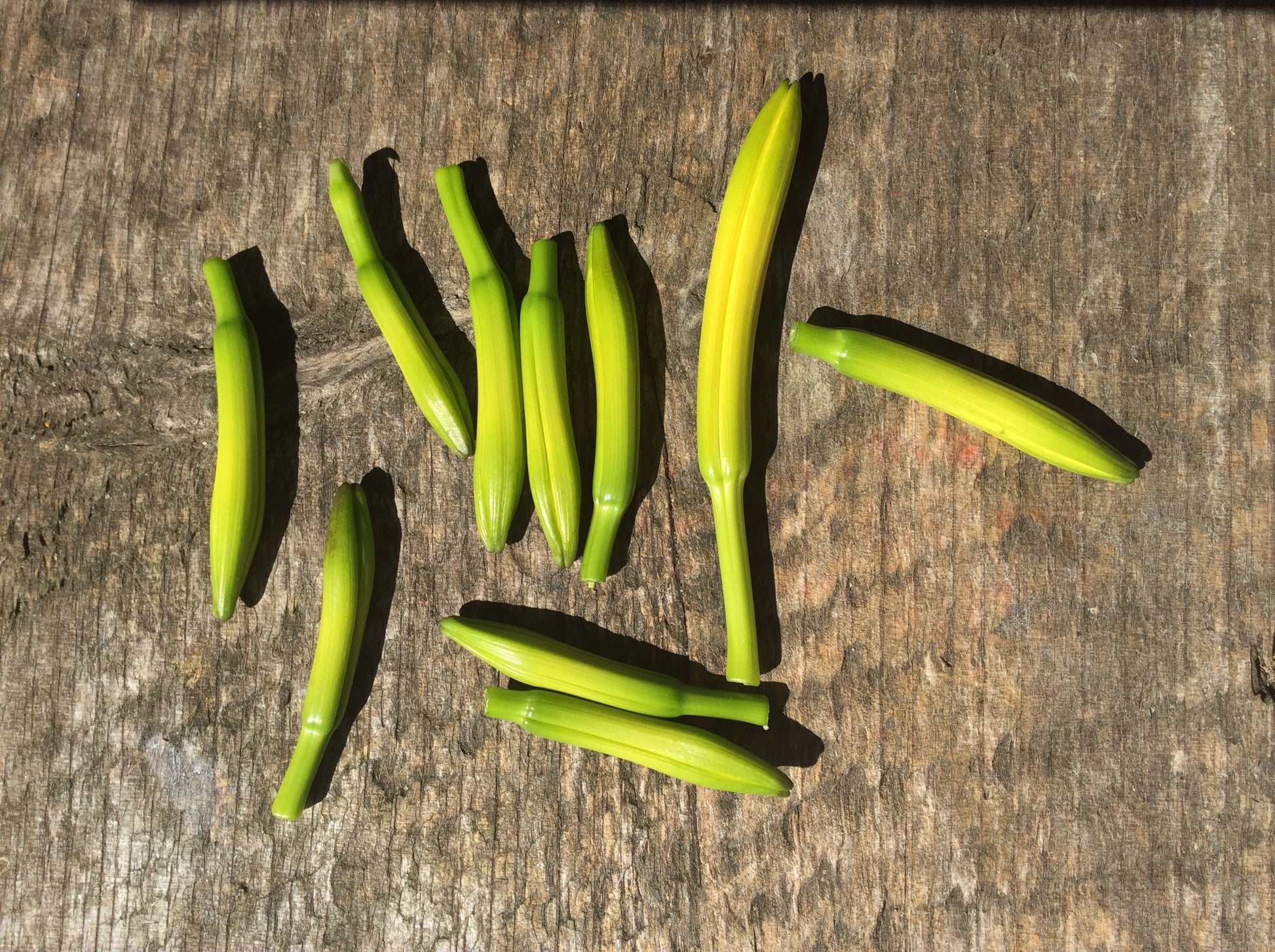Daylily - Hemerocallis fulva
Daylily - Hemerocallis fulva
Couldn't load pickup availability
Hemerocallis fulva is the most common member of the daylily family, which comes in 20 original species, and about 45,000 hybrids. In our part of the world, it has spread to countless ditches, fields, and woods. But it is also still grown in many gardens. It is an attractive, hardy, fast-spreading plant, with orange, unscented flowers. It is so common that hardly anyone actually ever buys this plant, but since we’ve had requests for it, and since we have an endless supply, we’ve included it in our lineup. All Hemerocallis bear small tubers, but the best edible part of the plant is the flower bud, which is abundant and delicious in mid-summer (similar to a green bean in size, texture, and taste). The young greens are also edible. As with most foods, some people may have adverse reactions, so eat small portions at first to ensure you can consume it safely. 🍽️
Cultivation: Daylilies are one of the easiest plants to cultivate. They thrive under a broad range of conditions, but will do best in full sun to partial shade, in a rich loam. They can tolerate relatively dry summer spells and extreme winter colds (we’ve experienced -39C winter temperatures, and they still thrived in the spring). 🥶
Food preparation: Numerous books and online sources are available to prepare the various parts of the plant (http://blog.chestnutherbs.com/delectable-daylily). We cook the green buds once they have attained their full size (5 to 10 cm). The flowers also make a nice addition to salads and stir-fries. 🥗
Ethnobotany: Native to much of Asia, where it has long been cultivated for ornamental and culinary uses, Hemerocallis has become one of the most widely used garden plants in Europe and North America. Easy to hybridize, it has produced thousands of beautiful ornamental perennial varieties. But it is almost never used for food production, except by a few foragers who readily find it in the wild. A perfect dual-purpose plant, it should be enjoyed both for its beauty and its food value.
Share
